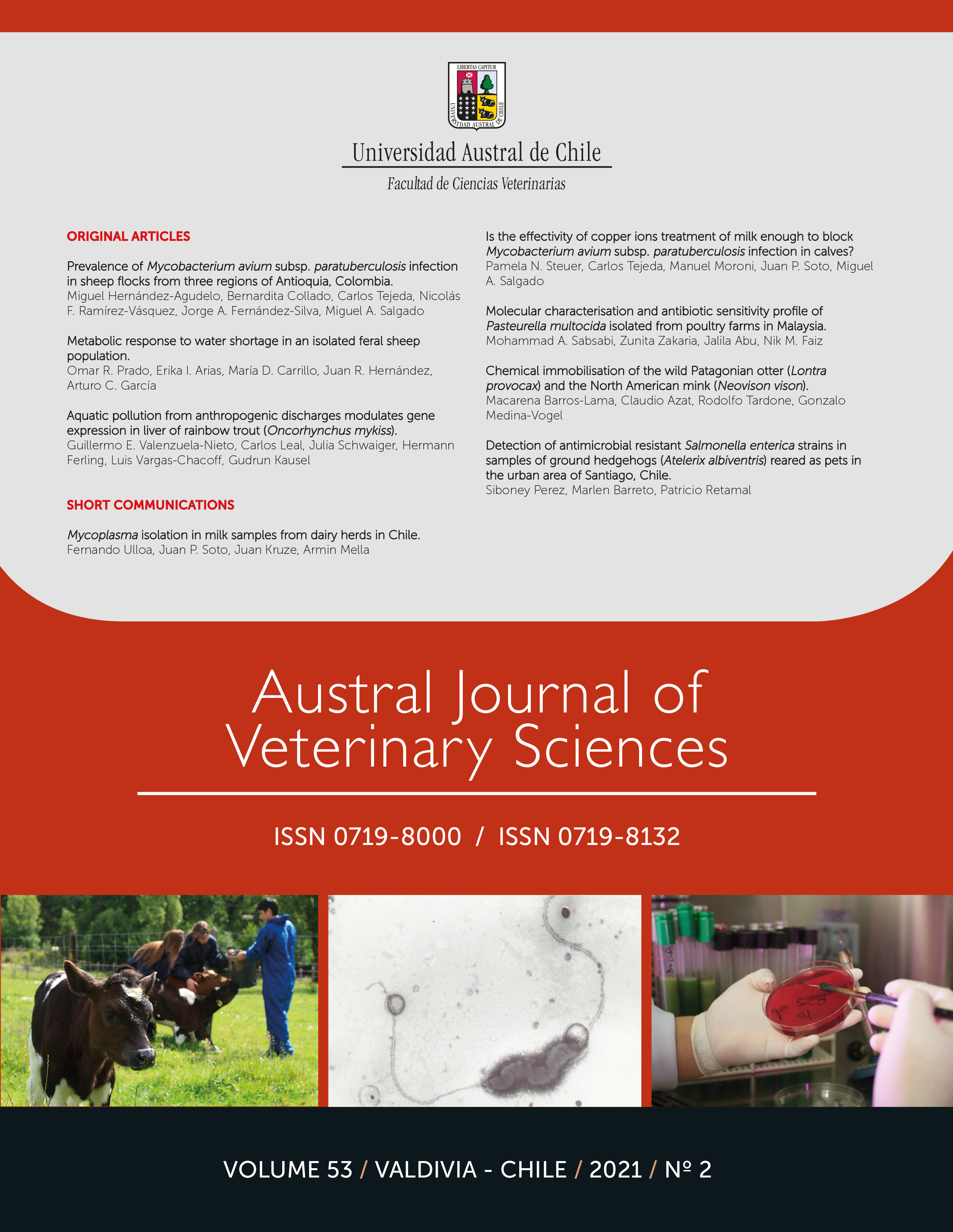Chemical immobilisation of the wild Patagonian otter (Lontra provocax) and the North American mink (Neovison vison)
Main Article Content
Abstract
The Patagonian otter (Lontra provocax) is an endangered species endemic to southern Chile and Argentina. Most of its distribution range has recently been occupied by the American mink (Neovison vison). As part of a long-term study on the impact of mink in Patagonia, we assessed five reversible anaesthetic combination protocols in different doses on wild L. provocax and N. vison, and described the occurrence of any adverse effects. We assessed 16 anaesthetic procedures with a combination of ketamine-medetomidine (KET-MED; 6.0±2.8-0.05±0.01 mg/kg IM, respectively) or ketamine-dexmedetomidine (KET-DEX; 4.1±0.9-0.02±0.004 mg/kg IM) in L. provocax and 23 anaesthetic procedures with KET-MED (13.3±4-0.1±0.04 mg/kg IM), KET-DEX (4.8±0.3-0.024±0.001 mg/kg IM) in a low dose of ketamine (LDK) or KET-DEX (10.2±0.9-0.025±0.002 mg/kg IM) in a high dose of ketamine (HDK) in N. vison. Reversal was accomplished using atipamezole at 5 times the dose of MED or 10 times the dose of DEX. All anaesthetic combinations produced complete immobilisation and rapid anaesthetic induction, except for two otters anaesthetised with KET-MED which exhibited a longer time to initial effect. Hypothermia was commonly observed at the end of the anaesthetic procedures. Due to the hypoxemia presented in four otters at the beginning of anaesthesia, it is recommended to use additional oxygen when possible.

